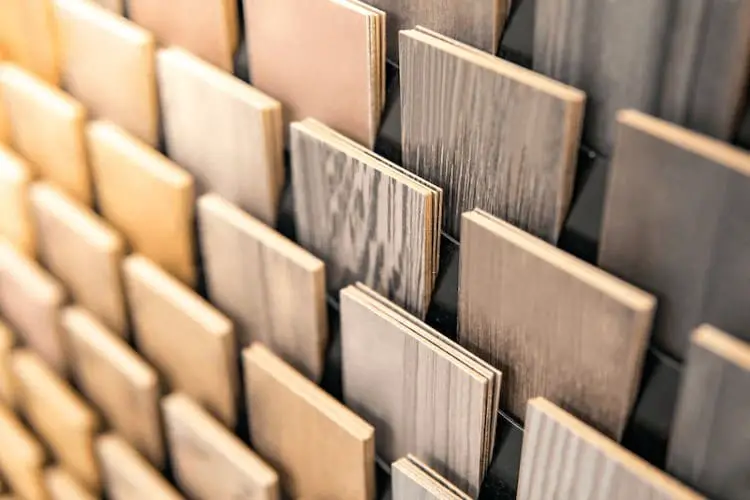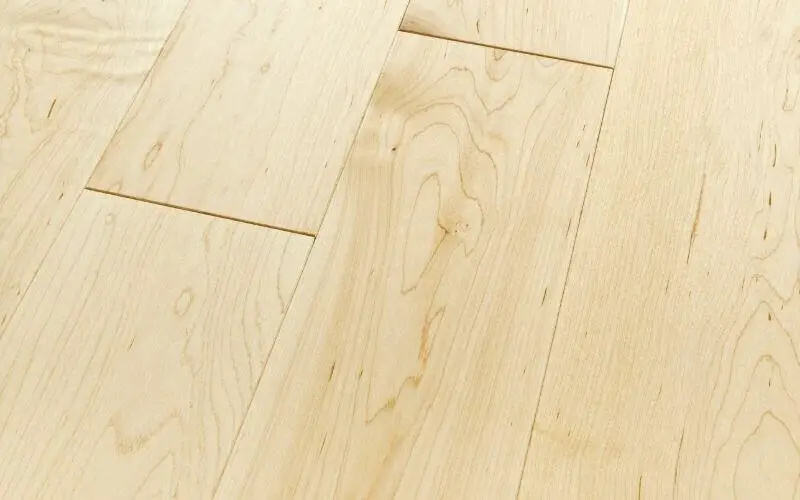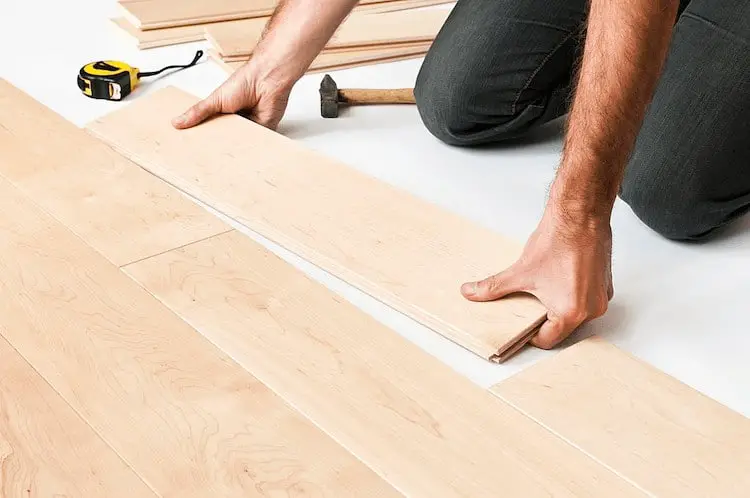If you decide on buying maple flooring, then take a minute to check out their pros and cons before you make a purchase.
Maple flooring is unarguably one of the best choices of hardwood flooring. Maple has strength and natural beauty; it adds style and resilience to your space.
It can be purchased as either solid or engineered planks in the tongue and groove flooring system. With that been said, is maple the perfect choice for your home? Let’s talk about the pros and cons of maple flooring.
Pros Of Maple Hardwood Flooring
Table of Contents
Beautiful Appearance
Maple hardwood is indisputably beautiful. It comes in a range of nice colors; brown, neutral beige, red, and chromatic grays.
These colors complement most of all home décor color schemes. If you desire a darker maple floor, it can be stained or better still dyed.
Maple flooring has a clean and smooth appearance because it has less grain than other wood varieties. Maple flooring is an excellent choice that can give your space attractive qualities.
Higher Degree Of Hardness
Maple is one of the hardest types of hardwood. On Janka hardness scale, hard maple has 1450 Pound-force while red oak has 1290 Pound-force. Maple is more durable and does not easily dent.
Little wonder maple flooring is used in public areas like bowling alleys and gymnasium floors which experiences pounding of bowling balls and heavy foot traffic respectively.
Ease Of Cleaning And Maintenance
Maple hardwood flooring just needs frequent sweeping and weekly mopping with a gentle soap solution to keep it in a clean state.
One of the precautions to take when mopping hardwood floor is to keep a caution sign so people will tread with caution, this is one of the tackling methods of slippery wood floor. To maintain maple hardwood’s brilliance, buff it once in two years.
Read: Best Vacuum Cleaners
Maple Improves The Quality Of Indoor Air
Maple hardwood is dust resistant by nature; it helps to control allergens and airborne contaminants that can cause harm to your health.
Maple Hardwood Has Consistent Grains
Maple has a stylish graining pattern that contains less flaws than other types of hardwood; it has a more uniform and homogenous appearance.
Affordable
Maple hardwood is widely available, hence, very affordable. It has many grades and types available; you can choose any according to your budget, need and preference.
Eco-Friendly
Maple’s abundance and short growing period makes it a more eco-friendly choice than walnut, oak or cherry which takes a longer time to grow.
Read: 10 things nobody told you about seagrass carpet
Cons Of Maple Hardwood Flooring
Maple Is Prone To Marks And Scratches
Marks and scratches are conspicuous on maple’s smooth surface because of its naturally light color and possession of lesser grains than other types of hardwood.
You need to be extra careful if you have pets in your home because their claws will leave marks that are distastefully conspicuous as time goes on.
The same applies to children that slide hard plastic toys on the floor. Therefore, you will have to keep refinishing maple floor to maintain its attractiveness.
Maple Is Sensitive To Heat And Humidity
Maple is sensitive to extreme temperature and humidity changes just like most hardwood types. Maple wood flooring is not suitable for your home if you usually experience summer humidity.
Summer humidity can make maple to contract and expand, split and warp. In cases like this, maple floor is prone to buckling but we’ve got some method to fixing wood floor buckling.
You can run a humidifier during dry winter months to stop maple floorboards from shrinking and shifting. In summer, you can use a dehumidifier to keep humidity levels beneath maple flooring in check.
Maple Is Difficult To Stain
Maple has a tight grain, so it does not always absorb stain fully. This leads to uneven patches on the floor. In parts of maple that has a more open grain, too much stain is absorbed and the result is dark spots.
This is a disadvantage if you are thinking of using light-colored maple for your flooring. That been said, instead of staining, choose a high-grade maple, which is white most times.
To darken maple, dye is more effective. Staining and dying should be done by flooring experts.
Maple Fades Over Time
Just like any light-color hardwood, continuous exposure to light can make maple fade over time. If a particular part of a maple floor is exposed to direct sunlight daily, it will fade quickly and the floor will have a double-tone effect.
Maple Lacks Grain Pattern
Maple is not the right option if you are looking for hardwood flooring that has natural patterns. Maple floor’s grain is subtle and fine; it has a simpler and plainer appearance.
Oak vs. Maple Flooring, Which Is Better?
The top choices for most people that use hardwood floors are oak and maple. Oak and maple are well-known. They are very durable. They are available in engineered and solid forms, and have various types of finishes.
Although both of them have similarities, they also have differences. Oak and maple differ in durability, appearance and pricing.
Durability
Both oak and maple are very durable. Below are the hardness ratings of oak and maple according to the Janka hardness test:
- Soft maple – 950 Pound -force
- Hard maple – 1450 Pound-force
- White oak – 1360 Pound-force
- Red oak – 1290 Pound-force
The hardness of the wood is directly proportional to the number (pound-force) i.e. the higher the number, the harder the wood.
Red oak, white oak and hard maple are very hard while soft maple is medium hard in terms of resistance to wear and tear.
Of all the types of oak and maple mentioned above, white oak is the most stable.
Asides hardness, white oak exhibits the least degree of contraction and expansion in reaction to changes in moisture level and temperature. White oak is also resistant to bugs and fungi.
Therefore, white oak is the best hardwood flooring choice for environments with extreme winter and summer temperature and humidity.
Oak and maple are both resistant to scratches and dents. But then, don’t forget that there are various grades available and each grade has its downsides.
Appearance
Maple and Oak differ in color and grain pattern.
Oak
Oak has two available types; red oak and white oak. Red oak has a rosy/ reddish tone with a medium to heavy grain pattern.
White oak has a less distinctive grain pattern and a brownish to slightly grayish tone. Red and white oak are obtainable in diverseness of grades, pre-finished and unfinished forms.
The presence of different patterns like wavy figures, flecks, rings, stripes, etc. on oaks makes it more attractive than maple. Additionally, oak holds stain well because of its slightly porous nature.
This implies that oak can have a beautiful finish with both dark and light stains.
Oak is a better flooring choice because its warm and beautiful tone with wonderful graining patterns adds aesthetic pleasure to homes.
Maple
Maple hardwood has two types; hard maple and soft maple. Maple has a creamier and lighter complexion than oak. It has light graining patterns with curly, wavy and straight lines.
Maple does not hold stain well because of its non-porous nature. Dark stains may look dappled on maple hardwood flooring.
Pricing
In general, oak is more costly than maple. Howbeit, each type of the hardwoods has many varieties whose prices are determined by their quality.
Average maple price ranges from $3.75 to $5.80 per square foot while average oak prices range from $5 to $7.5 per square foot.
The differences in the price of oak and maple range from one dollar to five dollars per square foot for materials and installation.
Conclusion
Maple flooring pros and cons has been discussed above, so you now know better if maple is suitable for your home or not. Maple is cheaper, durable and does not offer many options in grain pattern, and also, can stain irregularly.
On the other hand, oak is more pricey; offers more options in grain patterns and is highly durable.
Whether you want to opt for maple or oak hardwood for your home, it depends on your aesthetic preference, style, budget and weather conditions.
Tell us in the comments’ section below the type of hardwood you prefer and why you prefer it. Sharing this post will really be beneficial to those seeking more information about maple flooring pros and cons.


